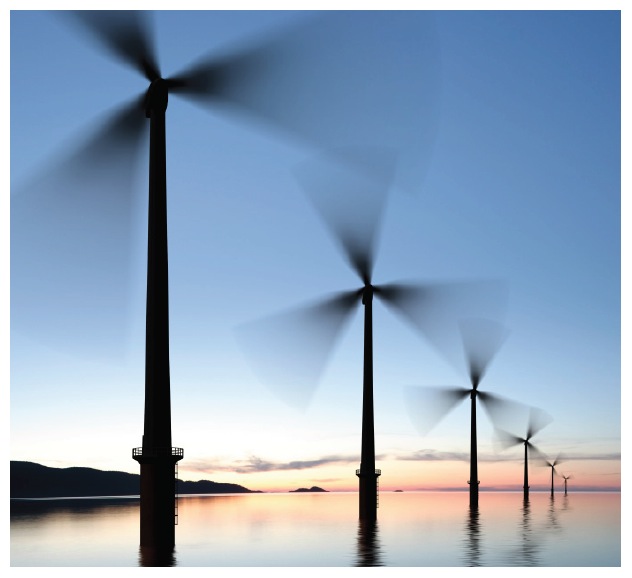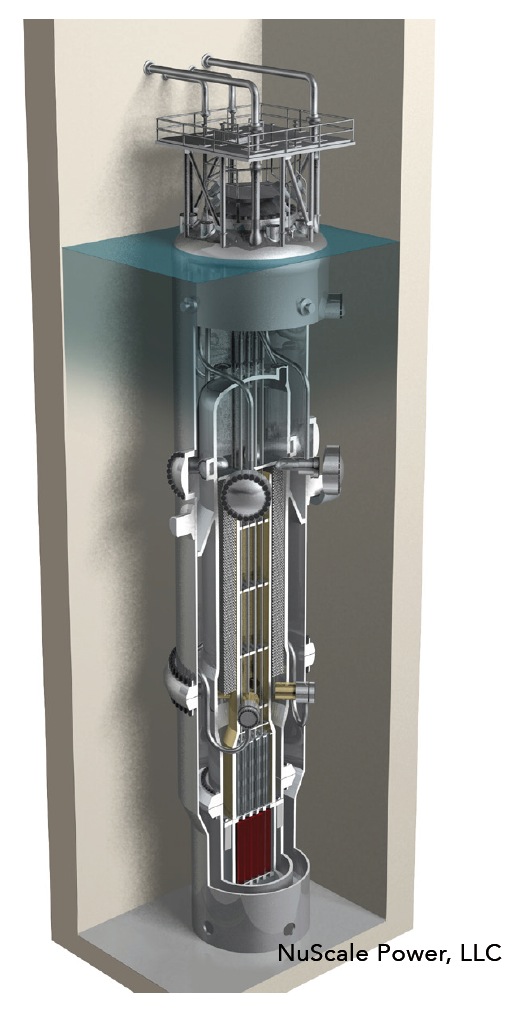ADVANCED ENERGY ECONOMY
 Access to affordable, reliable energy is fundamental to modern life and commerce, as consumers and businesses alike depend on uninterrupted power, unrestricted mobility, and constant connectivity. The increased need for reliability, the rising economic cost of blackouts, and the growing threat of cyber attacks can all be addressed through a more flexible and responsive energy system that draws on a variety of resources and gives all participants a role in energy decisions. By updating the aging infrastructure that has supported American prosperity for decades, and by moving toward a more diverse and dynamic energy system, we can also foster competition and innovation that will drive down costs while meeting our evolving energy needs. Fortunately, the technologies needed to build a modern, high-performing, and affordable energy system already exist, and bring with them huge opportunities for businesses to grow in the U.S. and lead global innovations in energy.
Access to affordable, reliable energy is fundamental to modern life and commerce, as consumers and businesses alike depend on uninterrupted power, unrestricted mobility, and constant connectivity. The increased need for reliability, the rising economic cost of blackouts, and the growing threat of cyber attacks can all be addressed through a more flexible and responsive energy system that draws on a variety of resources and gives all participants a role in energy decisions. By updating the aging infrastructure that has supported American prosperity for decades, and by moving toward a more diverse and dynamic energy system, we can also foster competition and innovation that will drive down costs while meeting our evolving energy needs. Fortunately, the technologies needed to build a modern, high-performing, and affordable energy system already exist, and bring with them huge opportunities for businesses to grow in the U.S. and lead global innovations in energy.
This report provides an overview of the technologies available to transform our energy system. Collectively, we call the 52 technologies included in this report “advanced energy,” and together they are already modernizing and streamlining the ways we produce, manage, and consume energy.
Many of these technologies are already in use, delivering proven solutions that bring much-needed innovation to the energy sector. Other technologies described here are in an earlier stage of development or just beginning commercial deployment, but they are likewise poised to accelerate the transformation of our energy system as they gain traction in the market. Today and in the future, advanced energy can:
- Improve the reliability and resilience of our energy system – Diverse energy solutions enhance our energy security, ensuring ample resources for electricity, heating and cooling, industrial processes, and transportation. Particularly on the electric grid, reliability and resilience involve not just long-term resource security, but also constant management. The technologies in this report provide grid operators with more sophisticated tools and a greater variety of resources than ever before, allowing them to manage the grid with more precise control and flexibility, ensuring that the lights stay on every minute of every day
- Lower costs for consumers – Reducing losses and waste across the energy system through more efficient production, delivery, and use of energy saves both energy and money. With average U.S. residential electricity prices at 12.5 cents/kWh in 2014, up almost 40% over the last decade, saving money is a priority.1 These savings come not only from reductions in consumption of fuel or electricity, but also from avoided or deferred infrastructure needs, which lower capital costs. At the same time, prices for advanced energy technologies are competitive and dropping rapidly with increased deployment and improved performance. In addition, by diversifying our energy mix to include inexpensive and domestically abundant fuels such as natural gas alongside energy technologies that do not require fuel at all, we can hedge exposure to fuel price uncertainty and insulate consumers from volatile commodity markets. Together, these improvements mean lower utility bills and savings at the pump.
- Empower customers with unprecedented choice and control – Advances in energy technology have not just changed the supply of electricity. They are also transforming the way businesses and individuals obtain and use energy. From technologies providing on-site energy to tools and technologies that control energy demand and increase energy efficiency to new options for personal mobility and the transport of goods and services, advanced energy is giving consumers and businesses the same choice and control over their energy use that they have come to expect in other sectors of the economy.
- Increase competition in the energy marketplace – More choice means more competition, as advanced energy technologies increase the options available to utilities, grid operators, businesses, households, and individuals with regard to energy production, delivery, and consumption. Working together even as they compete in the marketplace, these technologies are already transforming the energy system of yesterday into an increasingly diverse, dynamic, responsive, and flexible system.
Advanced energy is not just a contributor to our energy future; it is an economic engine as well. In 2014, advanced energy was a $200 billion industry in the United States and a $1.3 trillion market globally. The U.S. advanced energy industry is larger than the airline industry and on par with the pharmaceutical industry.2 Transforming the U.S. energy system with advanced energy also means growth and prosperity.
 Overview of “This Is Advanced Energy”
Overview of “This Is Advanced Energy”
The energy system is not just a collection of power plants and transmission lines, automobiles and gas stations, refineries and pipelines. It is a dynamic and complex assortment of resources, technologies, and services. For the purposes of this report on advanced energy technologies, we have broken the energy system into six main categories:
- Electricity Generation – The power plants, big and small, that generate electricity to reliably light our homes and power our industries. This section includes the growing suite of distributed generation resources that provide on-site energy and give customers unprecedented control over their energy use.
- Electricity Delivery & Management – The poles and wires that deliver our electricity, and the increasingly sophisticated hardware and software used to manage power supply and power quality with greater flexibility and precision.
- Building Efficiency – The tools and technologies to reduce and manage building energy costs and consumption while also improving building performance and comfort.
- Water Efficiency – The technologies and services available to reduce water use, and thereby reduce the amount of energy that goes into extracting, transporting, treating, and disposing of the water we need for domestic use, agriculture, industry, and power generation.
- Transportation – The technologies to efficiently and cheaply power cars, trucks, trains, and boats, including innovations and improvements in traditional vehicles.
- Fuel Production & Delivery – The growing variety of feedstocks, conversion processes, and delivery infrastructure used mainly in our transportation system, but also in some cases used in electricity generation, such as with fuel cells or microturbines.
The pages of this report are filled with technologies that deliver a variety of benefits to our energy system and enable a transformation that will result in reliability, affordability, consumer choice, and innovation across the board. This transformation is well underway in every state across the country as utilities, businesses, and customers embrace the advantages of advanced energy.
Download full version (PDF): This is Advanced Energy
About the Advanced Energy Economy
www.aee.net
Advanced Energy Economy (AEE) is a national association of business leaders who are making the global energy system more secure, clean, and affordable. Advanced energy encompasses a broad range of products and services that constitute the best available technologies for meeting energy needs today and tomorrow. Among these are energy efficiency, demand response, natural gas electric generation, solar, wind, hydro, nuclear, electric vehicles, biofuels and smart grid. It’s all the innovations that make the energy we use more secure, clean, and affordable.






 RSS Feed
RSS Feed